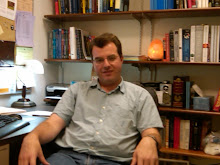I have been sick, which means time for reading but no energy for blogging. I don't have a coherent narrative to spin around what I've been reading. Some general thoughts:
- Chapter 6 recaps American higher ed prior to the Civil War. Much of it focuses on how colleges were places for the formation of young men and the training of clergy, the later mission being very much in keeping with the tradition of European higher ed but the former being somewhat disconnected from European colleges as places of scholarly activity. To this day, we see this disparity persist; the Small Liberal Arts College is very much an American thing, and most European public universities have both graduate and undergraduate programs, whereas America has a clear divide between the "R1" universities (research universities, usually flagships or runners-up when public) and "Regional Comprehensive" universities (public institutions that emphasize bachelor's degrees and to a lesser extent master's degrees, often focused on professional fields).
- Chapter 6 also notes that the policing of student conduct came to be seen as more and more onerous to the faculty. In this regard I am reminded of town-gown tensions going back centuries, as discussed in a museum exhibit at Cambridge University in England, where I spent a month in the summer two decades ago. The locals were known to get upset over the rowdy college kids. However, the British residential college is an institution that persists to this day in a form somewhat different from its Continental cousins, while also resembling US institutions to some extent. It makes sense that Britain would have institutions that mix Continental and American traits. The US is, for all of its diversity, in its roots an offshoot of England, and we got some of the weirder, less Continent-looking subcultures of England. If the Continent were so appealing to our cultural forebears they probably would have gone there.
- To this day, the policing of student conduct in residential settings remains something of a complicated issue for US institutions, as evidenced by continuing controversies and scandals involving investigations into sexual assault and other misconduct committed by students, often in off-campus residential settings. In many foreign countries dorms are either non-existent or else mostly utilitarian, being simply a place to live. The concept of the "residential experience" as part of the education is something that we Americans seem to value to more than a lot of the world. Consequently, the call for the campus authorities to investigate rather than (or alongside) the town police is strong in America.
- Chapter 7 is mostly about debates over Darwinism influenced the evolution of US institutions of higher learning. Darwinism was, of course, hardly the only factor that drove the evolution of academic freedom and values in the second half of the 19th century, but it's what Metzger focuses on. Interestingly, many of the debates over Darwinism started only after the biologists had reached a consensus on the matter; before then the theologians didn't see it on their radar. Once it became a controversy with theologians, however, the debate over evolution that took place in higher ed was one between learned factions, not between the learned and the masses.
- For many reasons, US institutions of higher learning largely shed their sectarian identities in the late 19th and early 20th centuries. The main exceptions are either Catholic institutions or else institutions of low academic prestige. Interestingly, this shedding of sectarian identity happened alongside a growing reliance on alumni donations and a growing concept of alumni as a tribe or social grouping. Naively I would have expected sectarian identity to remain important as alumni cohesion grew and became of financial consequence for schools.
- I suspect that the significance of alumni does much to explain why US educational institutions place so much emphasis on their professional-in-all-but-name Division I sports teams.
- Metzger gives a very hurried mention of a wave of interest in progressive educational methods in the late 19th century, but it appears that the most lasting and concrete legacy of this interest was the rise of electives in college curricula. That may be the most benign legacy of progressive education.



No comments:
Post a Comment